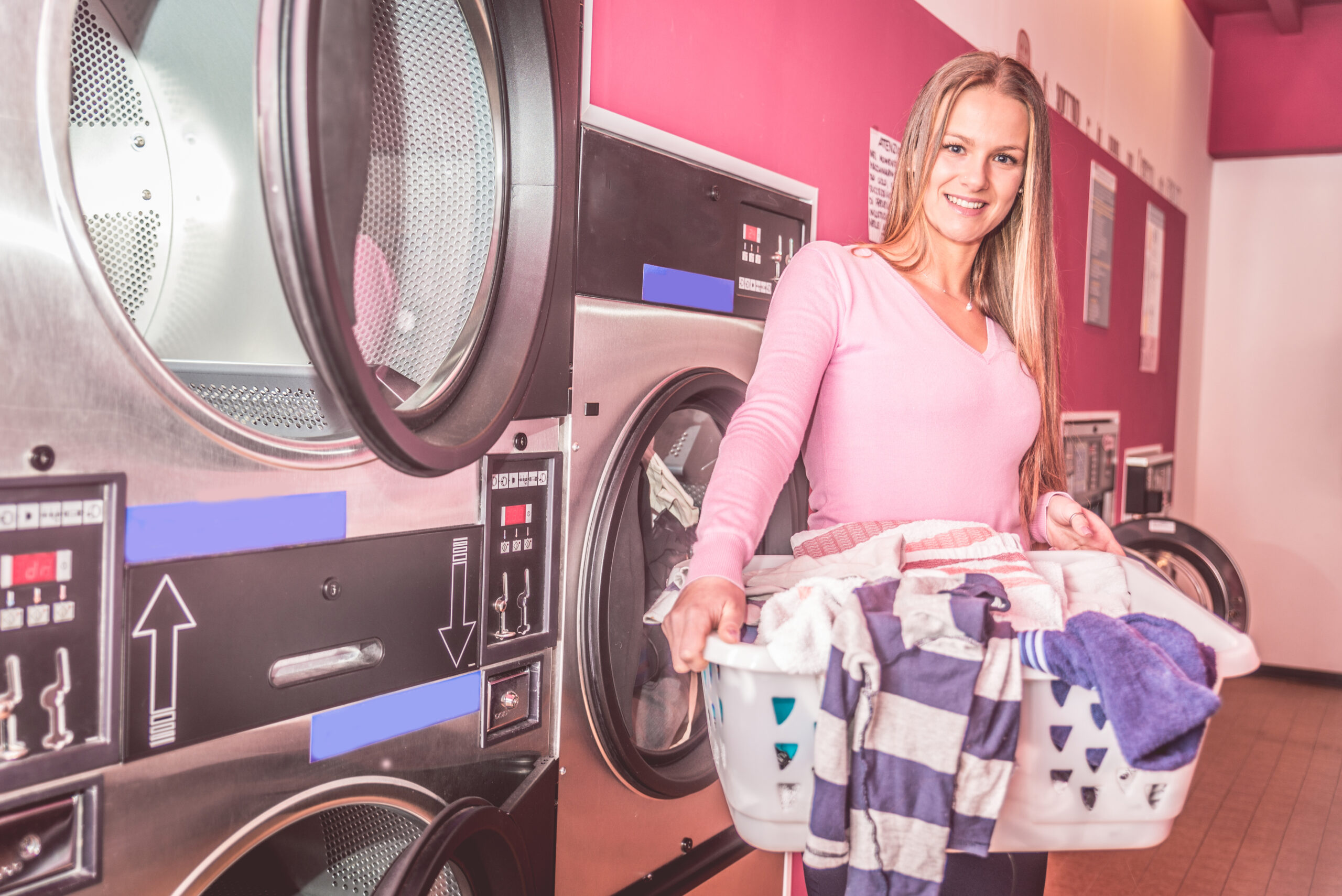In today’s convenience-driven world, customers expect quick, seamless, and digital options. This is especially true when it comes to everyday services like laundry. For laundromat owners and laundry room operators, implementing a modern Laundry Machine Payment System is one of the most impactful upgrades possible. These systems enable cashless transactions, track machine usage, and streamline payment collection across single or multi-location operations. From apartment buildings and campus housing to commercial laundromats, smart payment systems are becoming the new industry standard. They not only improve the customer experience but also reduce theft, increase revenue, and make operations easier to manage. This article explores what laundry payment systems are, how they work, and the tangible benefits they provide.
What Is a Laundry Machine Payment System?
A Laundry Machine Payment System is a hardware and software solution that enables users to pay for washer and dryer cycles using cashless methods like credit cards, mobile apps, loyalty cards, or contactless payments. These systems replace or supplement traditional coin-based machines with more secure and versatile payment options. Payment data is transmitted to the cloud or local software where operators can track usage, monitor performance, and review sales. Advanced systems also provide users with cycle status updates and enable refunds or loyalty rewards. With real-time reporting and remote machine control, owners gain powerful insights into daily operations. This technology is foundational to modernizing laundry environments and meeting consumer expectations.
Key Functions of a Payment System:
- Accept credit cards, mobile payments, and digital wallets
- Track machine usage and revenue in real-time
- Offer loyalty programs and stored value accounts
- Eliminate the need for coin collection and theft risk
- Provide machine status notifications to users
- Enable centralized control across locations
Core Features of a Laundry Machine Payment System
- Multiple Payment Methods
Customers can pay using credit/debit cards, NFC (like Apple Pay or Google Pay), laundry cards, or mobile apps, offering convenience and flexibility. Payment flexibility is a core reason many laundromat owners upgrade their systems. Customers want to avoid carrying coins or cash, and modern systems meet that expectation. By supporting tap-to-pay, chip readers, QR codes, and even Venmo in some cases, operators reduce friction at the point of service. Systems can also be integrated with branded loyalty cards or apps for repeat business. These options attract a broader customer base and support cashless trends. As preferences evolve, systems that offer diverse payment methods stay competitive. - Mobile App Integration
Many systems include mobile apps where customers can pay, check machine availability, get cycle alerts, and reload their balance. Mobile integration elevates the user experience by putting full control in the customer’s hand. From checking machine availability to receiving a notification when a cycle ends, customers appreciate this added transparency. Apps can also allow users to earn rewards, refer friends, or review service history. These features build loyalty and reduce on-site confusion or complaints. Owners benefit by capturing usage data, reducing customer service workload, and pushing promotions directly to users. Mobile-first functionality is a defining feature of next-generation laundry services. - Revenue Tracking and Reporting
Operators can view earnings in real-time, see usage trends, and export reports for accounting or performance analysis. Laundry machine payment systems provide powerful tools for managing income and usage analytics. Owners can log in to a dashboard and see real-time sales, machine status, and transaction history. Reports can be filtered by day, machine, location, or payment method. This data supports smarter decision-making and helps identify problems like underused machines or broken equipment. With automated reporting, time-consuming manual reconciliation becomes a thing of the past. Financial visibility leads directly to more efficient operations and higher profitability. - Machine Compatibility and Remote Control
Most payment systems are designed to retrofit onto existing machines or integrate seamlessly with new models. One of the biggest advantages of modern payment systems is compatibility with a wide range of commercial laundry machines. Whether the facility runs Speed Queen, Maytag, Dexter, or Electrolux, adapters and software integrations make installation easy. Owners can often control start times, lock machines, or update pricing remotely. This reduces travel time, staff hours, and delays in fixing issues. As more machines become IoT-connected, this type of remote control becomes even more valuable. It ensures operators are in full command of their business—anywhere, anytime. - Customer Support and Refund Tools
Systems often include features for handling refunds, machine errors, or account disputes quickly and professionally. Supporting users is easier when a digital system logs every transaction. If a customer’s machine fails mid-cycle or they accidentally double-charge, operators can verify the issue and issue a refund through the dashboard. Some systems even allow customers to submit refund requests through the app. This reduces conflict and improves customer satisfaction. It also builds credibility and trust in the business. By minimizing frustration, owners are more likely to retain and grow their customer base. - Security and Fraud Prevention
Encrypted transactions and account-based systems protect both customers and operators from theft or loss. Digital laundry payment systems use secure, PCI-compliant platforms to process transactions. This drastically reduces the risk of theft compared to coin boxes or cash handling. Customers trust card readers and mobile apps that show clear receipts and transaction history. Owners benefit from reduced liability, less physical handling of funds, and fewer machine break-ins. Security also extends to access controls for staff, preventing unauthorized changes. These safeguards create peace of mind for everyone involved.
Benefits of a Laundry Machine Payment System
1. Operational Efficiency
Automated payments eliminate the need to collect coins, reduce staff workload, and enable remote machine management. Machine-based payments simplify day-to-day operations for both staff and owners. Instead of counting quarters and emptying machines, revenue is tracked automatically in the dashboard. Employees can be reallocated to focus on cleaning, customer service, or higher-value tasks. Maintenance requests are often flagged by the system itself, minimizing downtime. With less cash to manage and fewer manual steps, businesses become leaner and more efficient. These upgrades make operations easier to scale.
2. Enhanced Customer Experience
Quick, cashless, and mobile-friendly payments make the laundry process smoother and more user-friendly. Customers enjoy fast, no-contact payment options that feel modern and intuitive. They don’t need to hunt for coins or exact change. Mobile apps let them monitor machine status and get cycle alerts while doing other tasks. Self-service refunds and loyalty rewards keep users engaged. This level of convenience attracts younger, tech-savvy users and improves satisfaction. A better experience translates to increased repeat visits and referrals.
3. Better Financial Control
Track income across machines, view real-time performance data, and simplify accounting tasks. Business owners gain full visibility into how machines are performing, what payment types are most popular, and when peak hours occur. This allows them to adjust pricing, schedule staff, and prioritize machine repairs strategically. Instead of relying on guesswork or weekly coin collections, revenue is available instantly. Reports can be shared with accountants or used for business loans or franchise management. This level of control reduces financial risk. Better tracking also supports compliance with tax and regulatory needs.
4. Increased Revenue
More payment options and better user experiences drive higher usage and larger average transaction values. When customers can pay how they want, they’re more likely to spend and return. Loyalty programs, promotions, and tiered pricing are easier to implement with digital systems. Operators can upsell premium cycles or scented detergents with just a tap. Happy users spend more—and come back more often. Real-time data lets owners test and refine pricing strategies quickly. Over time, this drives both volume and profitability.
5. Scalable Multi-Location Management
Owners can oversee multiple laundry rooms or laundromats from one cloud-based dashboard. Whether managing five apartment laundry rooms or a chain of public laundromats, a unified payment system makes centralized control possible. Owners can track performance by location, compare revenue, and deploy updates remotely. New machines or sites can be added without overhauling systems. This streamlines growth while maintaining consistency. Remote troubleshooting and real-time alerts also reduce service interruptions. It’s the backbone of a scalable laundry business.
The Future of Laundry Payments: Mobile-First, Data-Driven, and Contactless
As payment preferences shift and technology advances, laundry payment systems will continue evolving. Expect to see more mobile-first designs, voice-enabled kiosks, and AI-powered demand forecasting. Blockchain-based loyalty programs and energy-efficient incentives may also emerge. Contactless features will remain a priority for health-conscious users. In the near future, predictive analytics could suggest ideal pricing or maintenance schedules based on machine data. These innovations will define the next era of laundry services.
Conclusion
Laundry machine payment systems are transforming how laundry businesses operate. They bring together convenience, control, and insight into a single platform that benefits both owners and customers. With support for cashless payments, mobile apps, real-time reporting, and fraud prevention, these systems offer a smart return on investment. Operators can streamline their workflows, improve service quality, and scale faster. For customers, the result is a modern, reliable laundry experience they’re more likely to return to. In a service-based economy, this technology is no longer optional—it’s essential.








